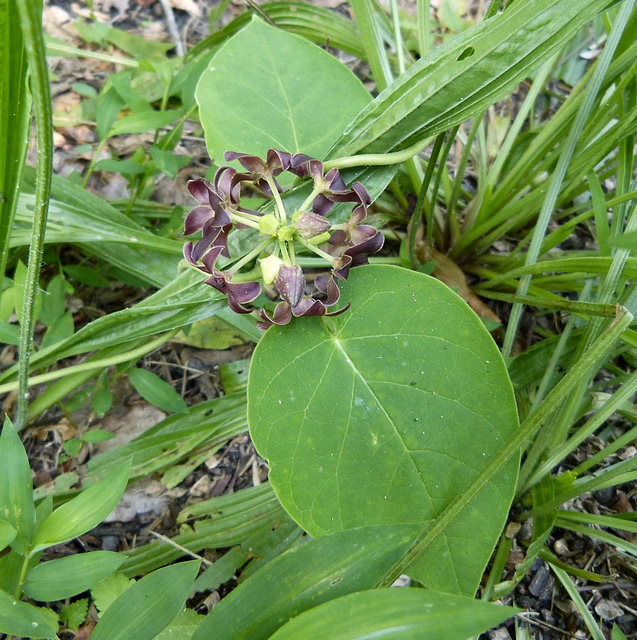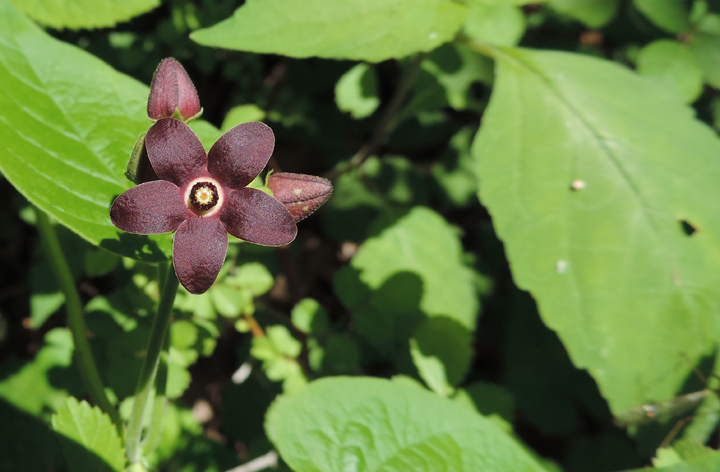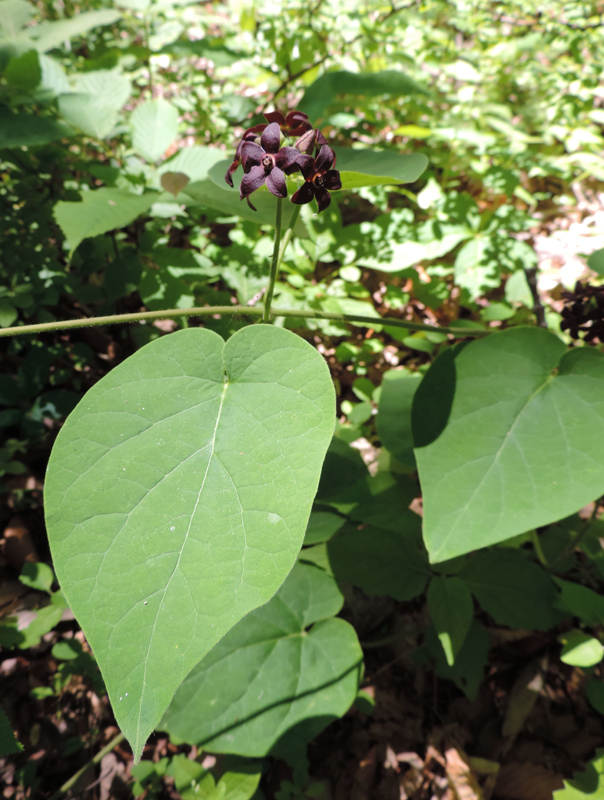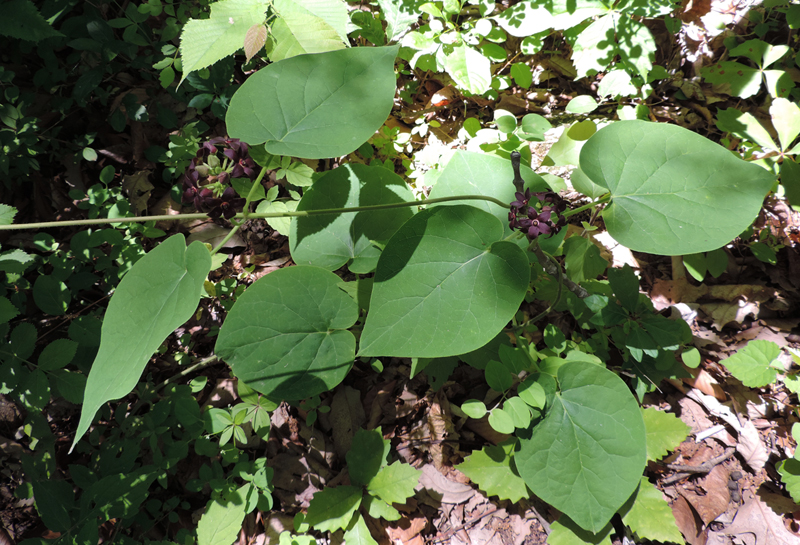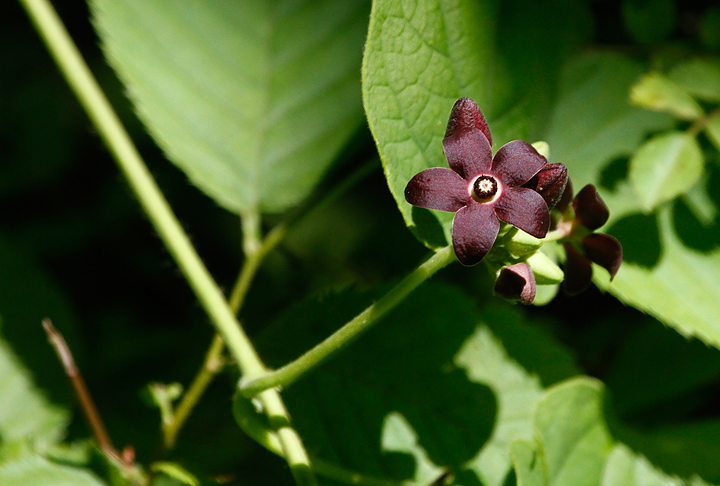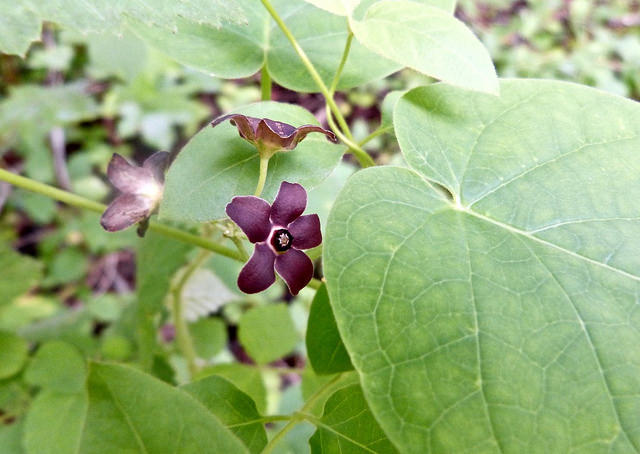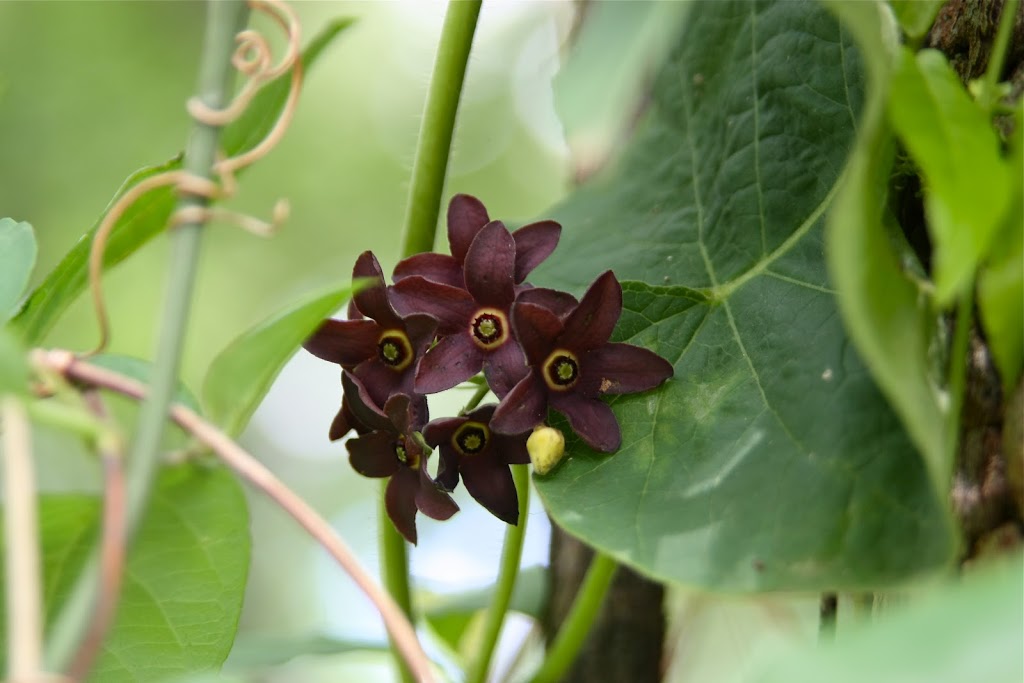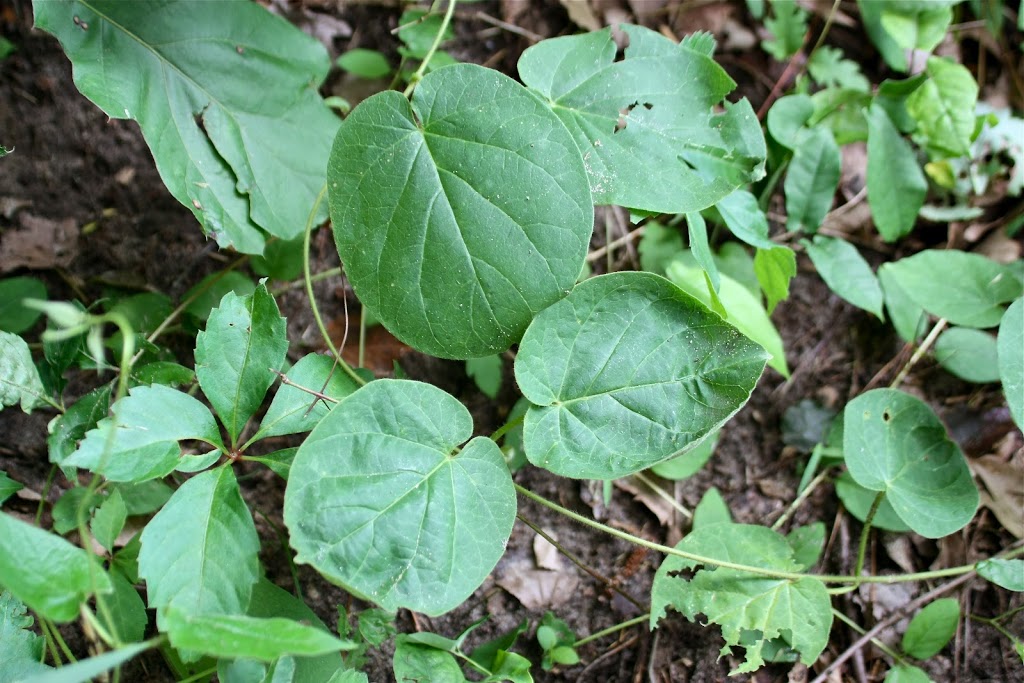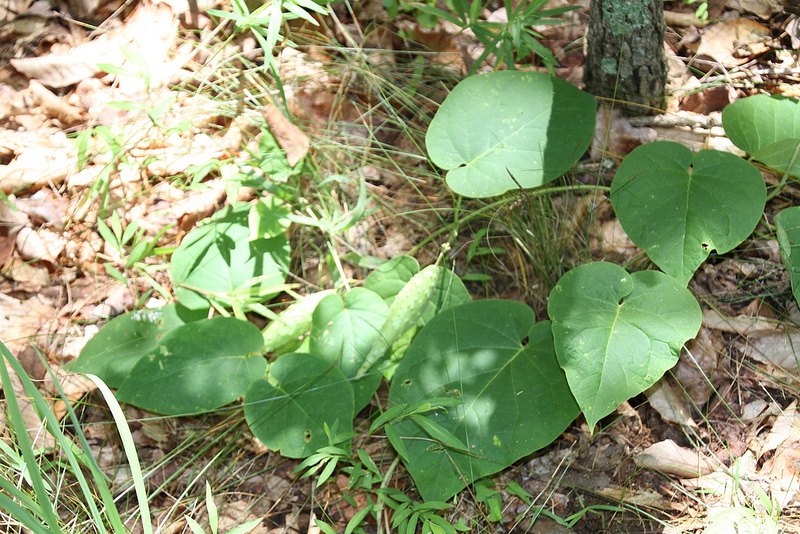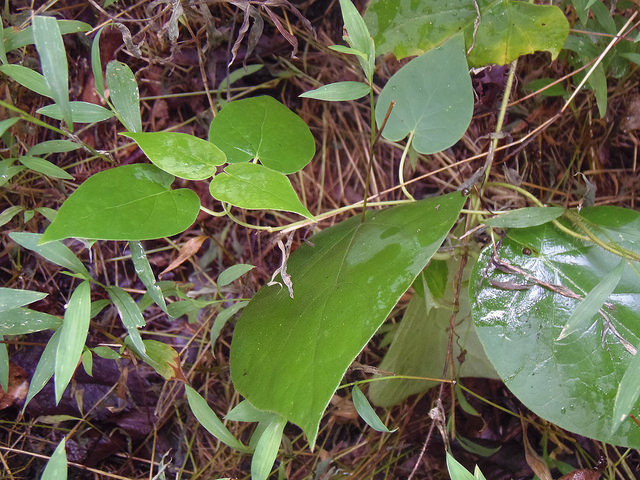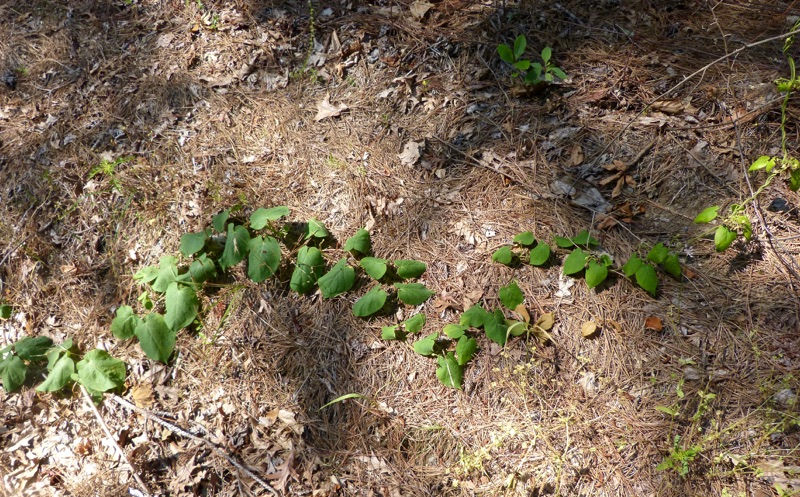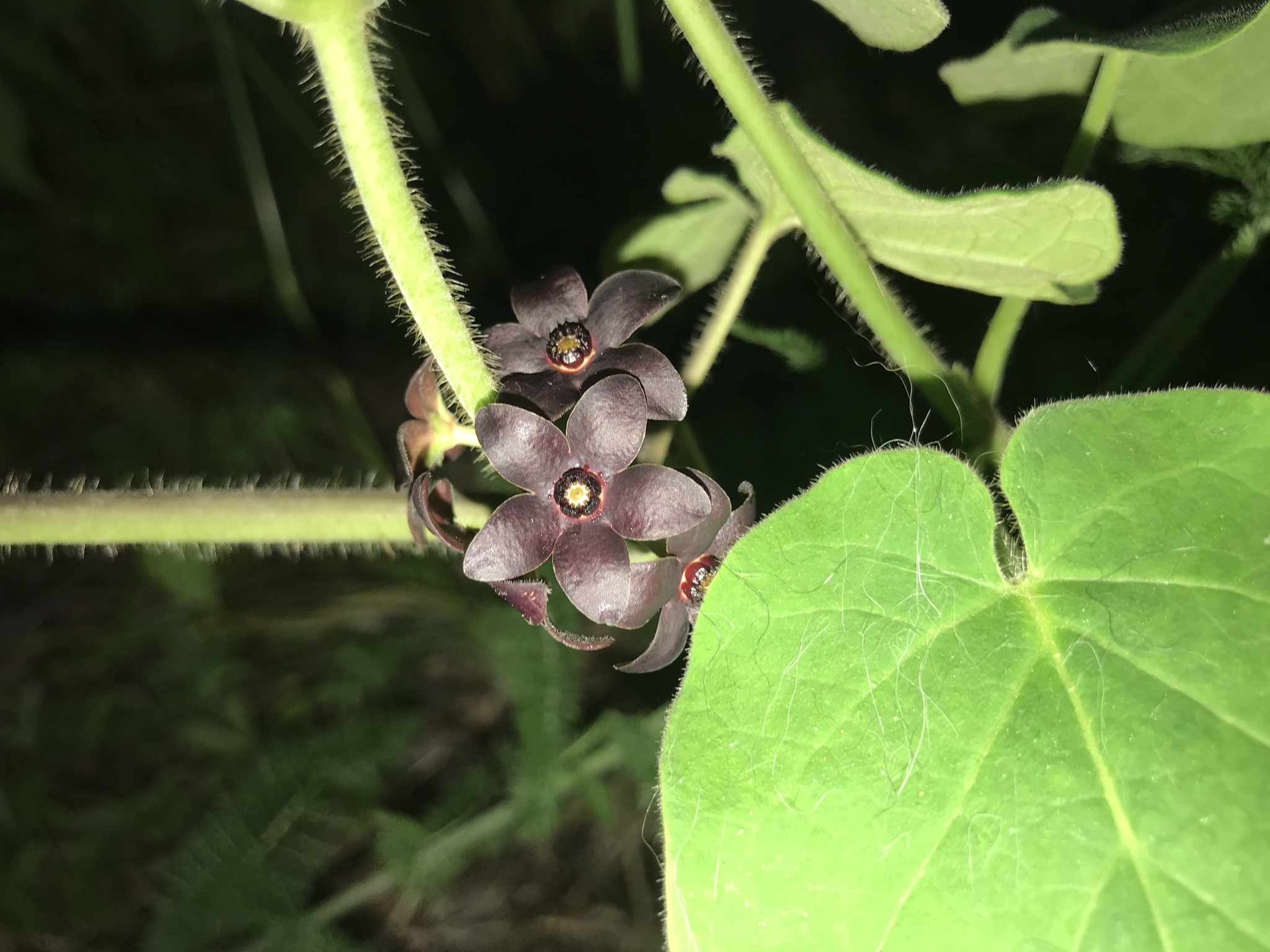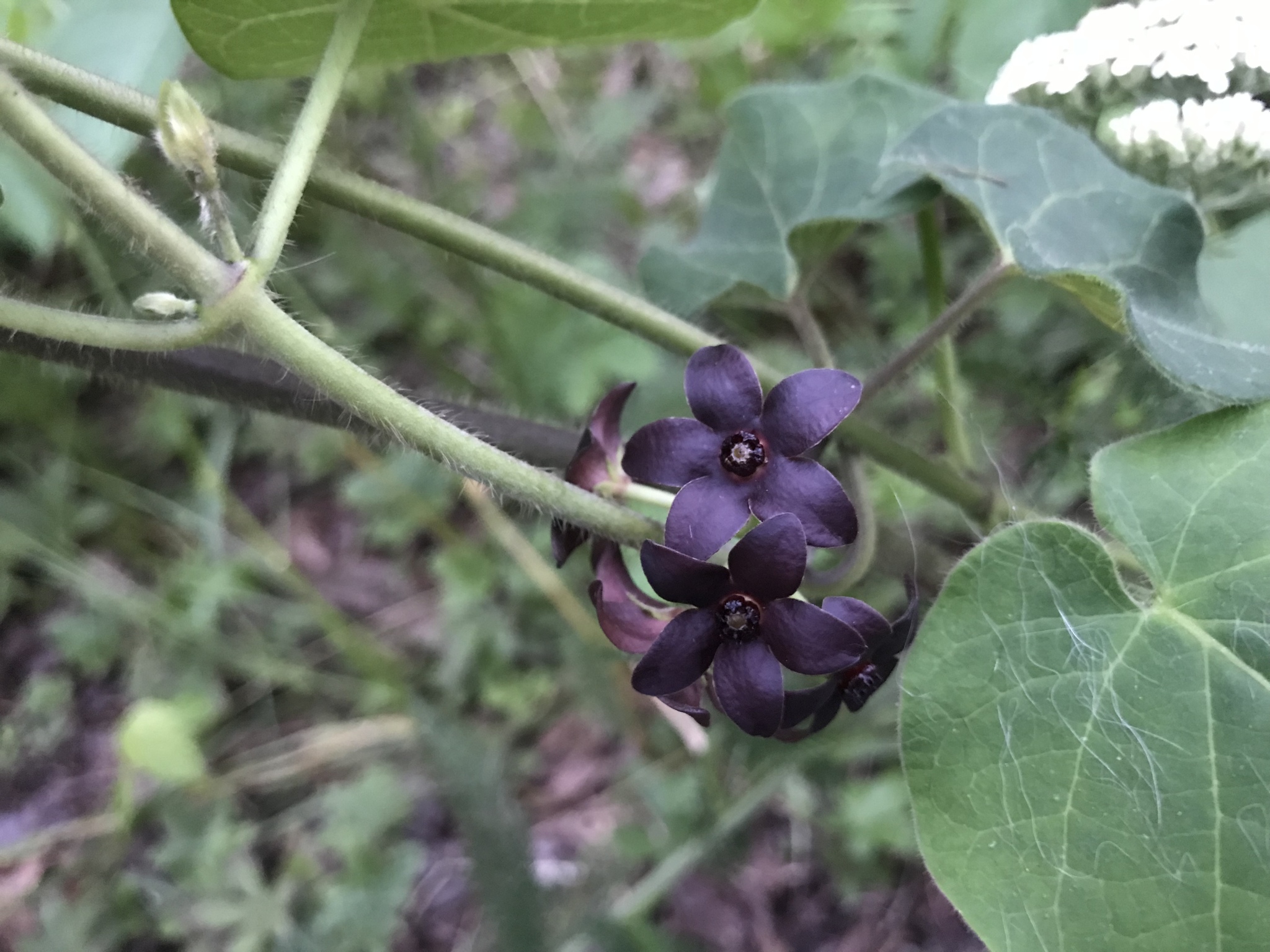Map Snapshot















66 Records
Status
Restricted to the Southeast, Carolina Milkvine reaches its northern limit in Maryland and Delaware. Carolina Milkvine is a vining plant that grows on well lit forested edges and open stream banks. In Maryland, this species is rare, with around 20 populations, restricted to the Coastal Plain. The Maryland Natural Heritage Program has ranked it as an S2S3 Threatened species.
Description
Like all species in the milkweed family, Carolina Milkvine has opposite leaves.
Seasonality Snapshot
Source: Wikipedia
| Matelea carolinensis | |
|---|---|

| |
| Scientific classification | |
| Kingdom: | Plantae |
| Clade: | Tracheophytes |
| Clade: | Angiosperms |
| Clade: | Eudicots |
| Clade: | Asterids |
| Order: | Gentianales |
| Family: | Apocynaceae |
| Genus: | Matelea |
| Species: | M. carolinensis
|
| Binomial name | |
| Matelea carolinensis | |
Matelea carolinensis is a species of flowering plant in the family Apocynaceae known by the common names maroon Carolina milkvine and Carolina anglepod. It is native to the southeastern United States, where it grows in open deciduous woods and stream banks. It is a perennial twining vine forb/herb with milky sap and 5 to 10 cm heart-shaped leaves. The vine dies back and returns every year. The 1 to 2 cm flowers are deep purple, occasionally yellow. The fruit is a follicle. [1] [2] [3] [4]
References
[edit]- ^ "PLANTS Profile Matelea carolinensis (Jacq.) Woodson maroon Carolina milkvine". USDA Natural Resources Conservation Service. Retrieved July 10, 2013.
- ^ "Wildflowers: Matelea carolinensis". NCSU. Retrieved July 10, 2013.
- ^ "Matelea carolinensis - Hortipedia". hortipedia. Retrieved July 10, 2013.
- ^ "Matelea carolinensis". Enchanter’s Garden. Retrieved 18 October 2013.
External links
[edit]
